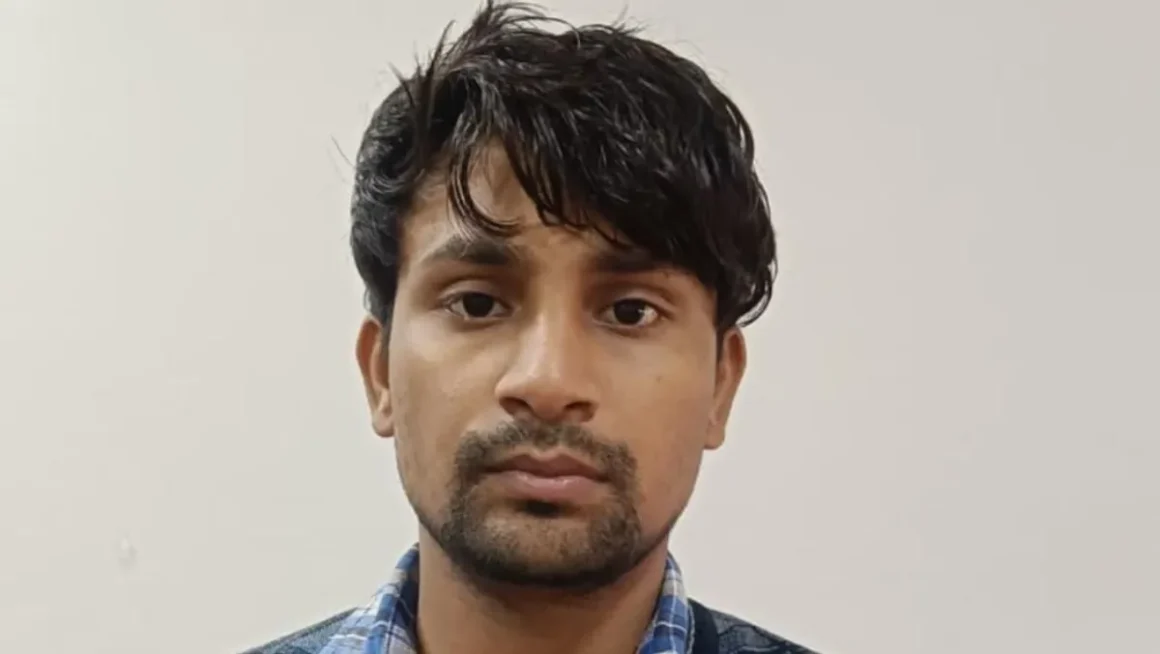“With every NIA Arrests, the truth becomes clearer — Delhi wasn’t attacked by one bomber, but by an entire shadow network hiding in plain sight.”

The National Investigation Agency (NIA) on 26 November 2025 arrested Soyab, a resident of Dhauj village in Faridabad, marking the seventh arrest in the ongoing probe into the 10 November 2025 Delhi blast near Red Fort. The arrest adds a crucial link to the expanding web of individuals who assisted, sheltered, and supported the prime accused Umar Un Nabi, the suicide bomber behind the devastating explosion.
A Broader Conspiracy: What Soyab’s Arrest Reveals
The NIA stated that Soyab had provided safe shelter and logistical assistance to Umar Un Nabi for several days before the attack. Investigators revealed that Soyab, who worked as a compounder associated with Al-Falah University, had harboured the bomber for around ten days, helping him evade surveillance.
The arrest underscores how the terror module functioned with local support networks, contradicting initial assumptions that the bombing was the act of an isolated individual.
Key Revelations: NIA Arrests
- Soyab provided shelter and material support to the bomber.
- His links with others at Al-Falah University are now under deeper scrutiny.
- The NIA suspects a coordinated operational network behind the blast.
The Blast That Shocked Delhi
On 10 November 2025, a car loaded with explosives detonated near the Red Fort Metro Station, causing chaos and injuring several people. The attack, executed by Umar Un Nabi, shook the national capital and revived concerns about sleeper cells operating within NCR.
Within days, investigators uncovered nearly 2,900 kg of explosive material from a rented house in Faridabad, signalling that the blast was part of a larger and more dangerous plot.
Investigators Trace a Growing Network
With the arrest of Soyab, the NIA has now apprehended:
- Two medical professionals linked to Al-Falah institutions.
- Multiple logistical supporters across Delhi-NCR.
- Individuals involved in procuring chemical explosives and equipment.
Each arrest is exposing more layers of the conspiracy, indicating that the module had both ideological backing and local operational support.
Why This Arrest Matters: NIA Arrests
The capture of Soyab is not merely another addition to the list—it is a breakthrough that strengthens the agency’s understanding of how the bomber moved, hid, and prepared for the attack. His arrest may help:
- Identify safe houses used by the group.
- Reveal financial trails linked to the terror operations.
- Provide leads on unknown associates still at large.
Was the Capital on a Bigger Target List?
Officials believe the group may have planned multiple coordinated strikes, as the sheer volume of explosives recovered suggests intentions beyond a single blast. The network’s ability to infiltrate educational and residential environments is raising fresh concerns.
National Security Response Intensifies
Delhi Police, Haryana Police, and national agencies are now jointly monitoring institutions and localities linked to the suspects. Enhanced surveillance and background checks at universities, especially in NCR, have been initiated.
Expanded Analysis: What This Means for National Security
The Delhi blast case has rapidly evolved from a single shocking event to a multi-layered national security challenge. With each arrest, investigators are piecing together the operational structure of a terror module that was far more embedded and organised than initially imagined. Soyab’s arrest adds significant weight to this understanding.
A Deepening Sleeper-Cell Threat
What’s becoming clear is that this wasn’t an isolated act of violence. The presence of explosive stockpiles, safe houses, university-linked operatives, and cross-state movements point to a sleeper cell attempting to take root in the Delhi-NCR region. Agencies are now exploring whether this module was connected to larger terror outfits seeking to revive activity in northern India.
The Al-Falah University Angle Widens
With multiple individuals linked to Al-Falah University already arrested, authorities are now digging deeper into whether the campus was exploited as a cover for radicalisation and logistics. Officials have begun interviewing faculty, students, and administrative staff to map possible influence circles and recruitment patterns.
Digital Footprints Under Review
NIA’s cyber-forensic unit is now examining:
- Encrypted communication channels between the accused.
- Financial transactions routed through digital wallets.
- VPN-based logins used to mask the bomber’s online presence.
- Social media networks that may have facilitated extremist propaganda.
Early reports suggest that the module used decentralised messaging apps and international servers to coordinate movements, making the investigation even more complex.
Operational Preparedness and Future Risks
Security agencies are now questioning how such a large quantity of explosives — nearly 2,900 kg — was accumulated without raising suspicion. This oversight has prompted calls for:
- Stricter monitoring of chemical sales.
- Mandatory reporting of rental properties occupied by non-local groups.
- Enhanced rural surveillance in border districts of Haryana and Delhi.
Public Reaction and Political Pressure
The blast — the first major terror-linked explosion in Delhi after years of relative calm — has triggered national outrage. Political leaders are demanding:
- A parliamentary briefing by the Home Ministry.
- Stronger anti-terror legislation.
- A coordinated anti-radicalisation program across universities.
Citizens, meanwhile, are calling for greater transparency in how investigative updates are communicated.
Conclusion: NIA Arrests
Soyab’s arrest marks another significant milestone in the Delhi blast investigation. As the NIA continues to unearth the links that enabled Umar Un Nabi’s deadly plot, it is increasingly evident that the attack was fuelled by a widespread local network. More arrests are likely as investigators move closer to dismantling the entire module.
FOR MORE BLOGS – beyondthepunchlines.com

 Add to favorites
Add to favorites








